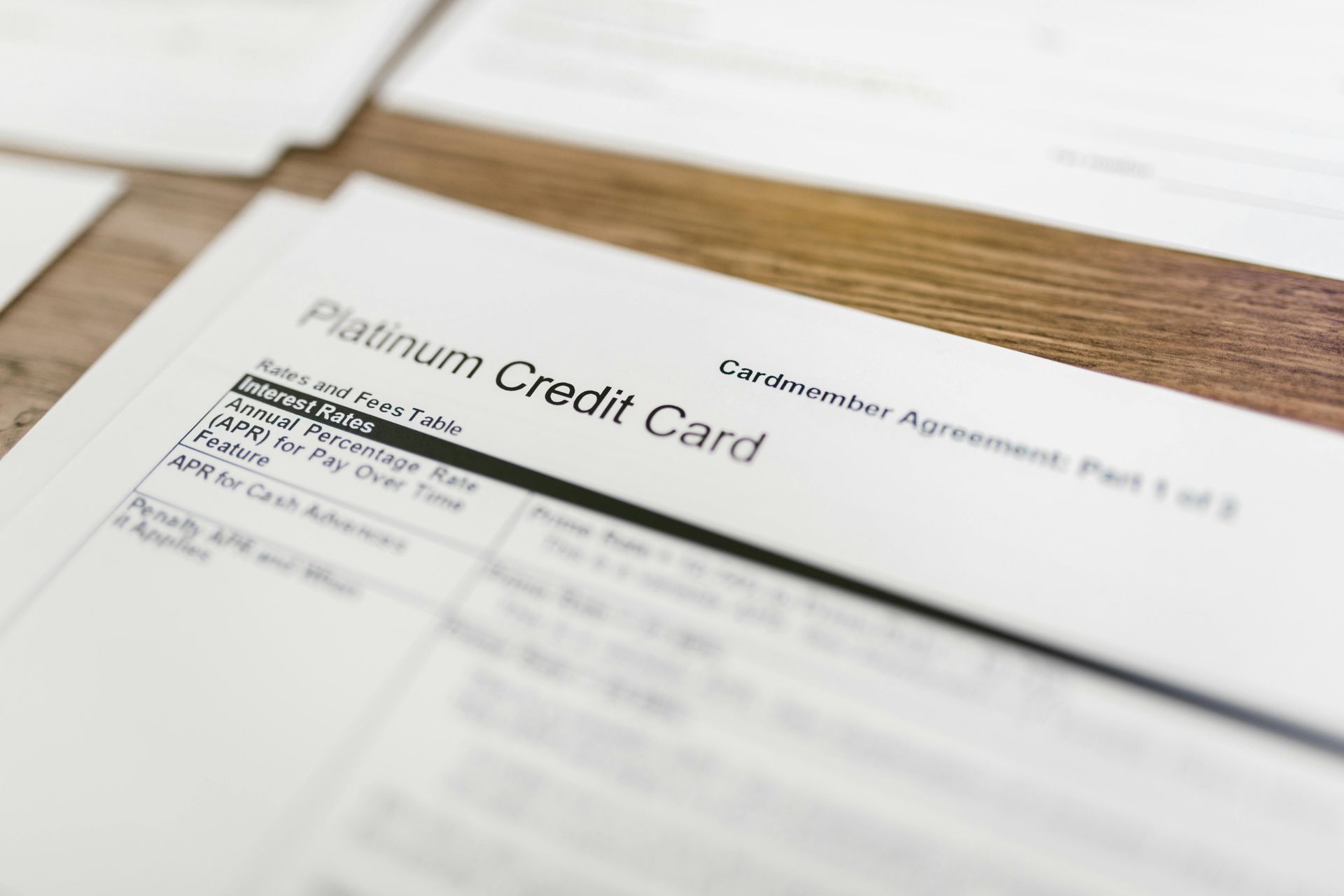How to Calculate Vacancy Rates in Apartments
Your step-by-step guide to vacancy rates
Understanding how to calculate vacancy rates in apartments is essential for anyone involved in real estate investing. The vacancy rate formula is a straightforward tool that helps you assess how well a rental property performs. It indicates the percentage of units that are unoccupied over a specific period. This metric not only reflects the financial health of your investment but also guides you in making informed decisions.
Vacancy rates can vary based on location, property type, and market conditions.
Knowing how to calculate this figure will empower you to adjust your strategies, whether you're managing a single-family home or a multifamily apartment building. A well-informed approach can help you minimize downtime and maximize profit.
Whether you're an experienced landlord or new to the rental market, getting familiar with vacancy rates is key to maintaining healthy cash flow and achieving your investment goals.
Key Takeaways
- The vacancy rate is a crucial metric for evaluating rental property performance.
- You can calculate the vacancy rate using simple formulas based on unit counts and occupancy days.
- Understanding market factors helps you make informed decisions to reduce vacancy rates.
Understanding Vacancy Rates and Their Importance
Vacancy rates are key metrics that help you assess the performance of rental properties.
Understanding the difference between physical and economic vacancy rates is crucial for real estate investors. Additionally, knowing the implications of high versus low vacancy rates can guide your investment strategies.
Differentiating Between Physical and Economic Vacancy Rates
The physical vacancy rate refers to the percentage of units in a property that are unoccupied. To calculate it, divide the number of vacant units by the total number of units, then multiply by 100. For instance, if you have 10 units and 2 are vacant, your physical vacancy rate is 20%.
The economic vacancy rate, on the other hand, takes rental income into account. It measures lost revenue due to both vacant units and tenants paying less than the full market rate. This rate helps you understand the financial health of your property. If your average rental income is lower than expected, it could indicate deeper issues beyond just physical vacancy.
Assessing the Impact of High Versus Low Vacancy Rates
A high vacancy rate can harm your cash flow and overall rental income. Rental properties typically have a market average vacancy rate of around 5-6%. If your rate is significantly higher, it may suggest problems like location issues, poor management, or subpar property conditions.
Conversely, a low vacancy rate indicates better performance and can increase your cash flow. Properties with lower vacancy rates can attract higher quality tenants and reduce turnover costs. As you monitor these rates, it is vital to be proactive in addressing factors that contribute to vacancies, ensuring your investment maintains profitability.
Calculating Vacancy Rates: Methods and Formulas
Vacancy rates are crucial for understanding the performance of your property. By calculating this rate, you can assess how many units are unoccupied compared to the total number of available units. This information helps you determine if your property management strategies are effective.
The Vacancy Rate Formula Explained
To calculate the vacancy rate, you can use a simple formula:
Vacancy Rate (%) = (Vacant Units / Total Units) * 100
For example, if you own a multifamily property with 100 units and 10 are vacant, your calculation would look like this:
- Vacant Units: 10
- Total Units: 100
- Vacancy Rate = (10 / 100) * 100 = 10%
This means your property has a 10% vacancy rate. You can apply the same formula for single-family properties. Understanding this rate allows you to evaluate your occupancy rate, which is the opposite of vacancy rate.
Tools for Calculation: Vacancy Rate Calculator
Using a vacancy rate calculator can make your job easier. Many online tools are available that automate the calculation process. For instance, these calculators require you to enter the total number of units and the number of vacant units. They then provide the vacancy rate immediately.
Some notable calculators include ones from Calculator Academy and Fit Small Business. These tools also often give you additional insights, such as economic vacancy rates, which factor in potential rent loss from vacancies. Utilizing a calculator saves time and helps ensure accuracy in your rental calculations.
Strategies to Mitigate Vacancy in Rental Properties
To effectively reduce vacancy rates in your rental properties, focus on competitive pricing, strong tenant retention strategies, and efficient property management. High tenant turnover can lead to significant financial losses. Here are some key strategies to keep your properties filled.
Competitive Pricing and Tenant Retention
Setting the right rental price is crucial. Research comparable properties in your area to ensure your prices are competitive. If your rates are too high, you risk extended vacancy periods.
Additionally, retaining existing tenants can save you time and money. Offer lease renewal incentives to encourage them to stay. These incentives might include reduced rent for early renewals or updates to the unit that improve their living experience.
Property Management and Maintenance Best Practices
Effective property management is vital in keeping your units occupied. Responding swiftly to maintenance requests shows tenants you care about their comfort. A well-maintained property attracts new tenants and keeps current ones happy.
Regular inspections can help identify potential issues before they affect tenants. Establish a clear communication channel for tenants to report problems. This proactive approach minimizes tenant turnover and enhances retention.
Improving Tenant Screening and Lease Terms
A thorough tenant screening process can significantly reduce future vacancies. Look for tenants with stable income, positive rental history, and good credit scores. This helps ensure you select reliable tenants who are likely to stay long-term.
Clearly defined lease agreements can also minimize misunderstandings. Make sure terms are transparent, covering expectations for both parties. Consider flexible lease options to appeal to a broader audience. Offering month-to-month leases might attract tenants who are uncertain about long-term commitments.
Analyzing the Rental Market and Economic Factors
When calculating vacancy rates, understanding the rental market and economic conditions is crucial. Market demand and competition directly impact how quickly units can be filled. Additionally, economic factors and seasonal variations affect rental activity and occupancy levels.
The Influence of Market Demand and Competition
Market demand refers to the need for rental properties in your area. High demand can lead to lower vacancy rates. Conversely, when demand is low, units may sit empty longer.
Competition plays a significant role, too. If many similar properties are available, tenants have more choices, which may lead to increased vacancy rates for your property.
To analyze demand, consider location specifics. Research the local job market, population growth, and amenities. Tools like online rental listings and market reports can provide insight into comparable rental prices and occupancy rates.
Adjusting to Economic Conditions and Seasonal Variations
Economic conditions greatly influence the rental market. For example, during a recession, people may hesitate to move, increasing vacancies. Conversely, a strong economy can lead to higher occupancy as more people seek housing.
Seasonal variations also impact occupancy rates. Summer often sees more moves, which can reduce vacancy rates. In contrast, winter may lead to higher vacancies due to colder weather and holiday distractions.
Stay informed on local economic indicators, like unemployment rates and housing trends. Adjust your rental strategy accordingly, whether it's modifying pricing or enhancing your marketing efforts based on current conditions.
Frequently Asked Questions
This section answers common questions about vacancy rates in apartments. Understanding these key aspects can help you better evaluate rental properties and make informed decisions.
How is the vacancy rate for rental properties calculated?
To calculate the vacancy rate, use the formula: (Number of vacant units / Total units) x 100. For example, if you have 12 vacant units out of 80 total units, the vacancy rate is (12 / 80) x 100, resulting in a 15% vacancy rate.
What constitutes a good vacancy rate for investment properties?
A good vacancy rate typically ranges from 5% to 10%. Rates below 5% suggest high demand, while rates above 10% may indicate issues that need attention. Your goal should be to maintain a rate as low as possible to ensure steady income.
How can one determine the rental vacancy rate within a specific location?
To determine the vacancy rate in a specific area, research local market data and trends. Look for reports from real estate agencies or local government resources. Comparing your property’s rate to the average in that area helps assess performance.
What steps are necessary to compute the occupancy percentage for apartments?
To compute the occupancy percentage, use the formula: (Occupied units / Total units) x 100. For example, if there are 68 occupied units in an 80-unit complex, the occupancy percentage would be (68 / 80) x 100, which equals 85%.
In what ways can vacancy rates impact real estate investment strategies?
Vacancy rates can influence your investment decisions. High vacancy rates may prompt you to adjust rental prices, improve property conditions, or explore different marketing strategies. Keeping track of these rates helps in forecasting income and making strategic adjustments.
What methods are used to calculate apartment vacancy rates in different states?
Calculating vacancy rates generally involves the same basic formula across states. However, local rental market conditions, laws, and reporting standards may vary.
Familiarize yourself with local regulations to ensure accurate calculations and compliance.
More about Coastline Equity
Property Management Services
 Learn More
Learn MoreOur team will handle all your property needs, offering specialized services such as in-depth inspections, liability management, staff recruitment and training, and round-the-clock maintenance—expert support tailored to the unique requirements of your real estate assets.
About Us
 Learn More
Learn MoreOur dedicated team transforms property management challenges into opportunities. From tenant management to streamlined rent collection and proactive maintenance.
Property Management Excellence
 Learn More
Learn MoreAs a contributing author for Forbes, Anthony A. Luna brings a wealth of expertise and knowledge in the property management industry, real estate sector, and entrepreneurship, providing insights and thought-provoking analysis on a range of topics including property management, industry innovation, and leadership.
Anthony has established himself as a leading voice in the business community. Through his contributions to Forbes, Anthony is set to publish his first book, "Property Management Excellence" in April 2025 with Forbes Books.
Insights
 Learn More
Learn MoreLearn more about Coastline Equity's property management practices & processes and how we support our clients with education and a growth mindset.
Coastline Equity Property Management is your partner as you continue to learn and grow.
News & Updates
Property Management Made Easy
Los Angeles
1411 W. 190th St.,
Suite 225
Los Angeles, CA 90248
Temecula
41743 Enterprise Circle N.,
Suite 207
Temecula, CA 92590
P.O. BOX #1489
TORRANCE, CA 90505






